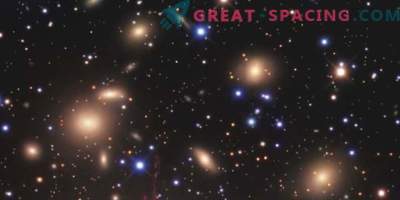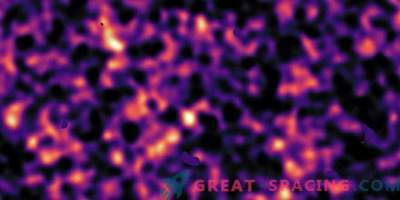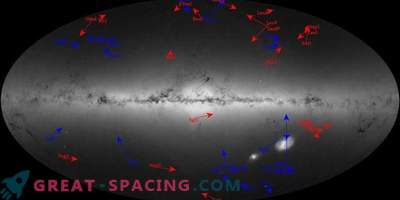
A new study carried out by the Very Large Telescope (Very Large Telescope, abbr. VLT) of the European Space Agency and the NASA Hubble Space Telescope for the first time showed that matter can also interact with itself - a discovery which, at first glance, contradicts that we knew about the nature of this invisible mass.
So what happens?
Using the advanced astronomical tool MUSE (Multi Unit Spectroscopic Explorer) without the VLT and Hubble telescopes, astronomers were able to view 4 colliding galaxies within the cluster of Abell 3827 galaxies. This is a huge cluster, which often has a gravitational lens effect.
All galaxies are mainly composed of dark matter. Without this invisible mass, which accounts for about 85 percent of the entire mass of the Universe, observations of visible matter in galaxies would not make sense, since the stars simply scattered. But in the presence of dark matter, the galaxies retain their structure.
So, observing Abell 3827, astronomers learned that dark matter exists due to the effect of a gravitational lens: the stars located behind a cluster of galaxies became distorted in space-time. If you remove the gravitational influence of the visible part of the galaxy, the huge gravitational component will remain, allowing astronomers to accurately measure the number and location of dark clouds of matter in a cluster of galaxies. Using this method to determine the location of dark matter in 4 colliding galaxies, astronomers have concluded that the dark matter associated with each galaxy is about 5,000 light-years behind its visible part.
What causes this lag?
According to a study published in the Journal of Monthly Notices of the Royal Astronomical Society on April 15, it is not caused by some kind of interaction between galactic halos of dark matter, within the bounding galaxies. When the galaxies collide, the visible matter interacts as expected, but the dark matter halo appears to attract each other, forming a lag of 5,000 light years.
This is an exciting discovery, but in order to understand how dark matter, interacting with each other, forms this scale effect, we need more observations and more accurate computer simulations.
"We know that dark matter exists due to gravitational lensing, which helps us to look into the remote corners of our Universe, but we still have little disastrous about the darkest matter," said researcher Lily Williams of the University of Minnesota. "Our observations show that dark matter can interact with itself, that is, we can eliminate some key theories about it." This discovery contradicts the recent study of 72 clusters of galaxies. The results of this study showed that dark matter interacts very little with itself.
But the new study focuses on individual colliding galaxies, rather than entire clusters. Despite this, both studies provided a unique opportunity to study possible dark matter interactions at two different scales.











































